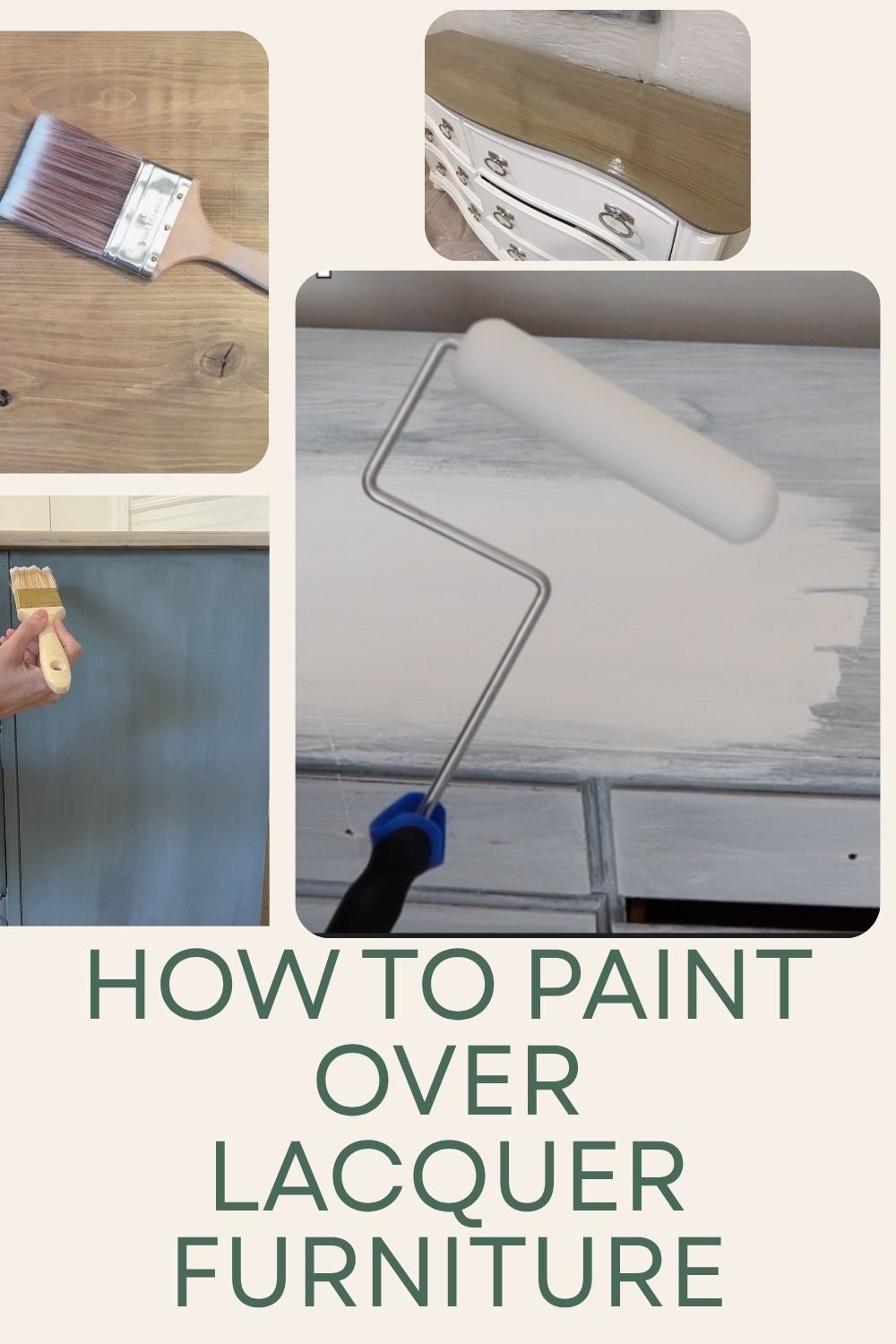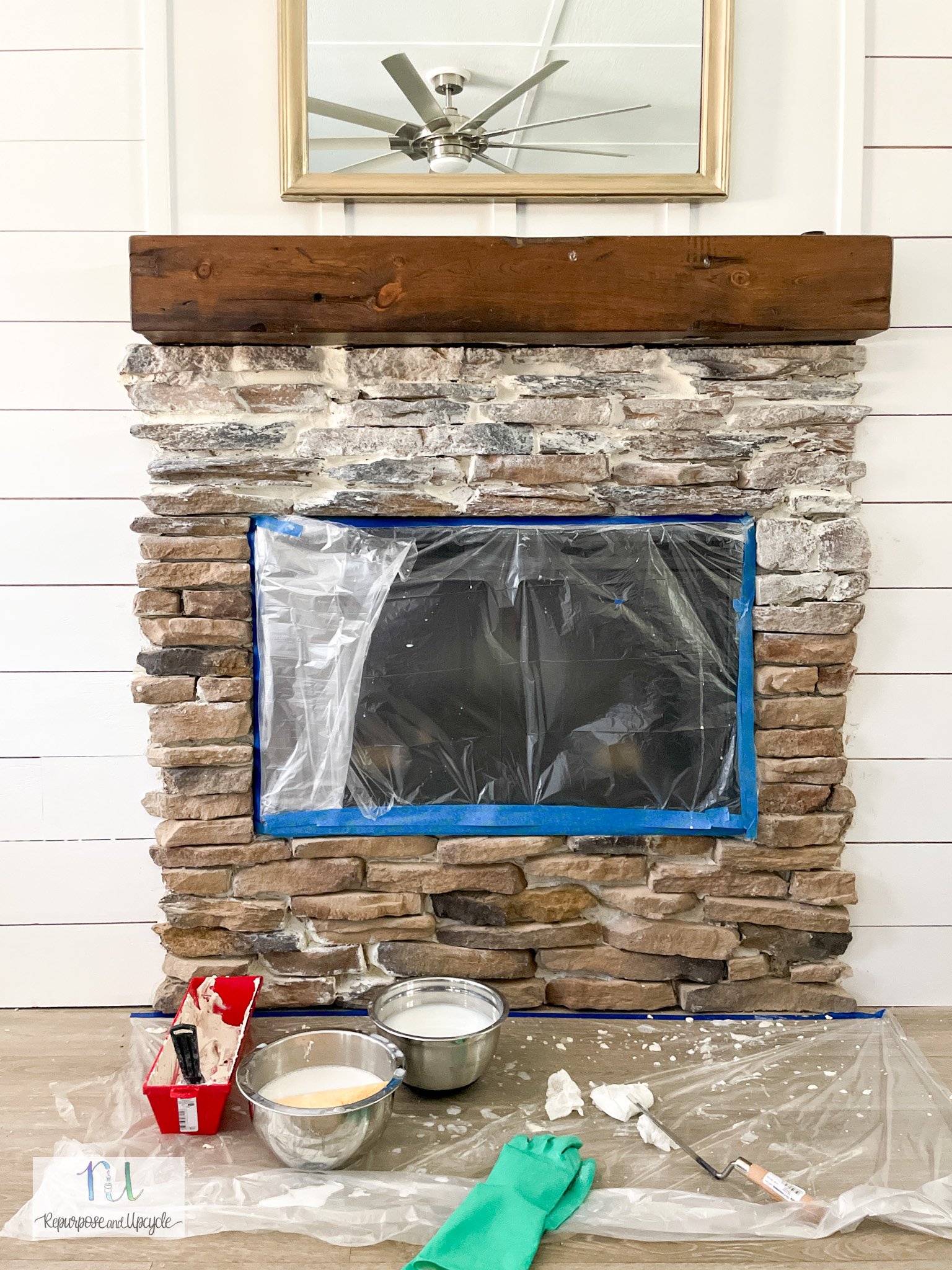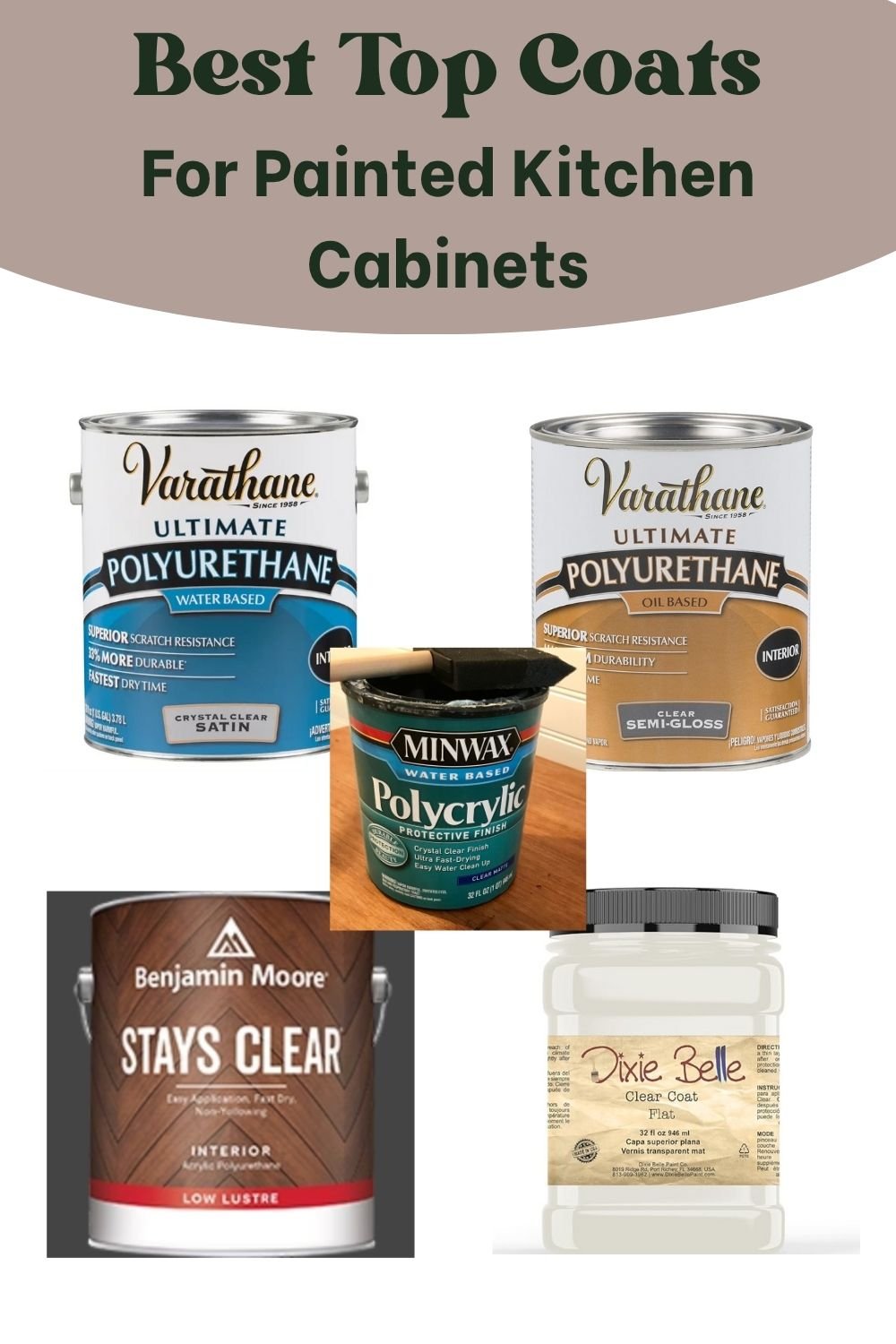Do you need to add a sealer to stained wood stairs? The short answer; yes. I’ll go into more detail in this post, but any high traffic surface that’s been stained or even painted needs a good sealer. As a matter of fact, you can easily ruin a beautiful stained wood staircase without protecting it with a good sealer.
I’m going to show you how I sealed our newly stained oak wood stairs and also a few tips and facts about sealing wood stairs that I’ve learned along the way. If you want to know how to stain wood stair treads, I’ve got a dedicated post for that.

I’ve wanted to rip out these stairs since we moved in two years ago. Let me show you what they used to look like.

Our living room used to be a garage and you can see where the old metal threshold used to be.
We hired a carpenter to remove the entire door frame and steps and replace them with new oak wood steps.
Disclosure; this post contains affiliate links. As an Amazon Associate I earn from qualifying purchases. This disclosure statement refers to the rest of the Amazon links in this post.

It looks so much better now! Don’t look too closely because we still need to caulk and paint the steps. One day at a time…
Let’s talk about staining these wood steps and what products I used.
My biggest piece of advice when it comes to staining or dying wood is to always always test stain a small piece of wood first. Wood comes in all different types and patterns. One piece of Oak wood will stain different than another piece of Oak wood. Don’t ever trust how the stain looks on the can because it will look different once it’s applied.
Our carpenter left me a large piece so I could try a few different stains. These were the colors I was leaning towards.

I chose four colors from Varathane’s fast dry oil based line. I previously used this product when I applied wood stain to a previously stained wood bench. It worked beautifully.

At first glance my favorite was the darker stain on the right.

I liked the subtle look that Varathane’s Carbon Gray added to the Oak.

Honestly Varathane’s Weathered Gray was a little too gray for me.

Varathane’s Sunbleached stain acted more like a clear sealer. I didn’t like how it brought the yellow tones out of the Oak wood.

I really liked Varathane’s Kona stain but I thought it might be a little too dark on the Oak wood steps.
Can you guess which one I chose?


I chose to use Varathane’s Carbon Gray because it pulled the yellow tones out of the Oak and made a nice neutral wood look.


Now for the real question;
Do you need to seal stained wood stairs?
Yes! Like I said before, any high traffic surface needs a good sealer.
How do you pick a sealer for stained wood stairs?
This comes down to personal preference. You do need to be mindful of a few things though.
First, if you are applying a water based sealer over an oil based stain and vise versa, you need to make sure the stain is fully dry.
Follow the instructions for dry time. They say oil and water don’t mix, which is true, but when it comes to sealers and stains most of the time you can apply one over the other as long as the stain is completely cured (once again, every product will come with different guidelines so refer to those).
Second thing to keep in mind; oil based sealers (especially polyurethanes) amber or yellow over time. This is especially true if they are exposed to any amount of sunlight. If you are sealing a white or light color, I would suggest using a water based sealer other than polyurethane. Water based sealers normally dry faster and create less of an odor than oil based.
Third; oil based sealers are normally know for being more durable. That being said they take a lot longer to cure and you need to be mindful about them yellowing over time. They also produce more VOC’s so be careful using oil based products inside.
There isn’t a magic answer for this but knowing the facts will help you pick the right products and finishes.
My suggestion is to use the sealer that is made from the same company as the stain. This way you will know for sure that they will work well together.
Also note that the glossier the sheen of sealer means it’s more durable. I’ve shared lots of tips on how to choose the right type of paint and sealer in this post where I explain about different paint sheens.
Can you use a wood stain plus Polyurethane all in one for finishing stairs?
I would not suggest using a ‘stain plus sealer in one’ for any flooring. As a matter of fact, one of the most popular brands, Minwax PolyShades (stain plus poly in 1 step) states very clearly “NOT FOR USE ON FLOORS.”
What are the best brands of sealers for stained wood floors?
This again comes down to personal preference, but here are a few that come highly recommended.
Water based sealers
Oil based sealers
It’s worth noting that there are a few other types of floor sealers like wax and penetrating oil sealers. Both of these are not as durable as the other ones I’ve mentioned and require a re coat every few years.
Now the question is; what sealer did I use on my newly stained wood floors?

Since I used a Varathane stain, I went with a Varathane water based sealer. I applied three coats of this water based sealer and I’m pleased with how they turned out! I chose a satin finish because I didn’t want much of a “sheen” at all.
For those of you who are wondering, yes I did put a water based sealer over an oil based stain. The reason I did this was because I wanted a product that had a quick dry time and little to no VOC’s.
Hopefully you’ve learned something about how to seal stained wood floors. I’ll be sharing more about our new opening in our living room soon!
Lindsey**





